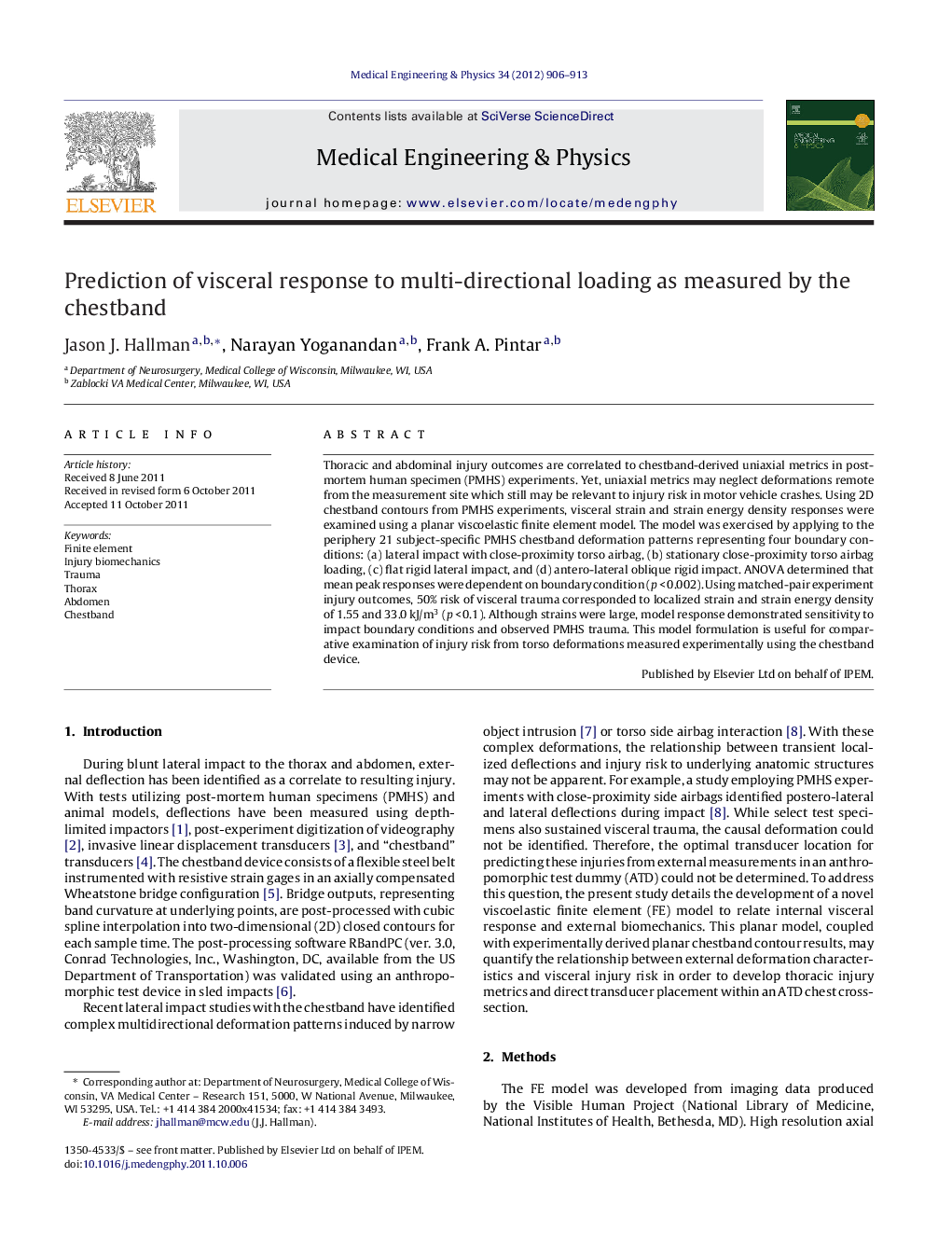| Article ID | Journal | Published Year | Pages | File Type |
|---|---|---|---|---|
| 876117 | Medical Engineering & Physics | 2012 | 8 Pages |
Thoracic and abdominal injury outcomes are correlated to chestband-derived uniaxial metrics in post-mortem human specimen (PMHS) experiments. Yet, uniaxial metrics may neglect deformations remote from the measurement site which still may be relevant to injury risk in motor vehicle crashes. Using 2D chestband contours from PMHS experiments, visceral strain and strain energy density responses were examined using a planar viscoelastic finite element model. The model was exercised by applying to the periphery 21 subject-specific PMHS chestband deformation patterns representing four boundary conditions: (a) lateral impact with close-proximity torso airbag, (b) stationary close-proximity torso airbag loading, (c) flat rigid lateral impact, and (d) antero-lateral oblique rigid impact. ANOVA determined that mean peak responses were dependent on boundary condition (p < 0.002). Using matched-pair experiment injury outcomes, 50% risk of visceral trauma corresponded to localized strain and strain energy density of 1.55 and 33.0 kJ/m3 (p < 0.1). Although strains were large, model response demonstrated sensitivity to impact boundary conditions and observed PMHS trauma. This model formulation is useful for comparative examination of injury risk from torso deformations measured experimentally using the chestband device.
